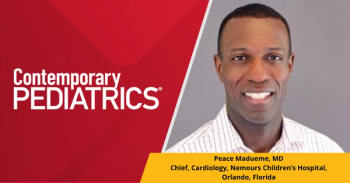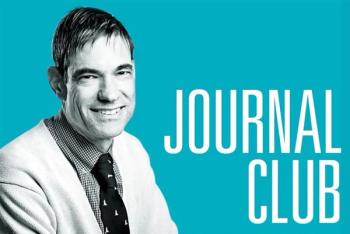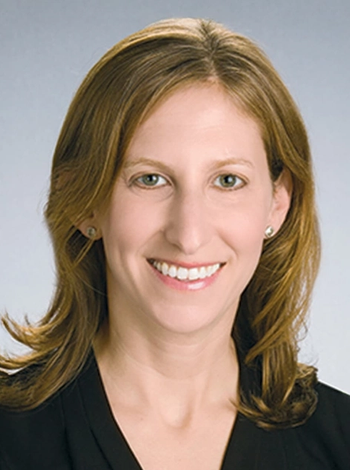
- Vol 35 No 06
- Volume 35
- Issue 6
Burnout: Pediatrician, heal thyself
Changes in healthcare systems, payment, and the practice of medicine have made significant impacts on the personal and professional lives as well as well-being of pediatricians. Although pediatricians commonly enter medicine with a strong desire to help their patients and provide comprehensive patient care, and anticipate a fulfilling and satisfying career, all is not well with the physician workforce.
Several well-publicized articles in the lay press reporting suicide deaths of resident trainees,1,2 one study indicating as many as 400 physicians per year commit suicide,3 and another revealing that 1 in 16 surgeons experiences suicidal ideation while not seeking help4 all point to problems in the physician workforce in understanding, preventing, and avoiding burnout while promoting personal and career satisfaction and well-being.
Although not commonly examined in the research arena, pediatrics is not exempt.5 This article will focus on the impacts of burnout among pediatricians and steps pediatricians can take to avoid burnout and promote physician well-being.
Symptoms of burnout
Let’s take a closer look at the symptoms of burnout.
Emotional exhaustion
This can include feelings of being tapped out or the inability to recover after time off. Physical and emotional energy are both low and the pediatrician may find himself/herself saying things like "I'm not sure how much longer I can keep going like this.” The pediatrician only has so much energy and empathy for others.8 Emotional exhaustion can affect the physician at home as well, leaving less emotional capacity for family, friends, and loved ones.”
Depersonalization
The pediatrician may notice increased cynicism, sarcasm, and complaints about his or her job. One can think of this as a dysfunctional coping mechanism. "Compassion fatigue" may leave the pediatrician with a lack of emotional energy and not emotionally available for patients.8 Depersonalization is a dissociative coping mechanism that makes one feel as if he or she is outside one’s body or that experiences are not real or dreamlike. It allows us to manage difficult situations without internalizing every detail. If it occurs occasionally, it can be normal, but can also be an indicator of a larger problem if/when these feeling become excessive, consuming, or interfere with work or everyday life.
Reduced sense of accomplishment
The pediatrician begins to have a lack of meaning in his or her practice and questions both the quality of one’s work and whether he or she is making a difference in patient's lives.8 The internal motivation for the work is challenged, including feeling part of a bigger system, making a difference, or having an impact. The balance of internal and external motivators is necessary to provide balance when working in high-demand careers.
Reduced satisfaction with work
A number of things decrease satisfaction with work, such as hassles related to managing the practice, the call schedule, the compensation model, or getting along with partners. All these things can lead to increased time away from other important things in life, such as family and outside interests and decreased work satisfaction. Unfortunately, pediatricians often ignore these issues and may increase the risk of burnout. The effects of burnout are cumulative and decreased satisfaction builds over time, having a greater impact the longer the problem persists.
Pediatrician burnout is a big problem
In general, burnout is greater in the physician workforce compared with the general population.7 General pediatrics experiences less burnout than most other specialties, with 35% (approximately 50% among all physicians) reporting burnout and nearly 60% (also approximately 50% among all physicians) of pediatricians feeling that their practices leave them with enough time for personal and family matters.9 Pediatric subspecialists report burnout and satisfaction levels of approximately 40%, respectively. Although burnout may impact pediatrics less than other specialties, the numbers still indicate a significant problem.
One recent study by Starmer and colleagues10 looked at early career pediatricians who are particularly at risk for burnout due to multiple transitions such as moving from residency into private practice as well as beginning families. Even though these pediatricians reported career and life satisfaction (83% and 71%, respectively, significant concern is raised from the reports of burnout (30%) and a satisfactory work/life balance (43%). Women also were more likely to report burnout and less likely to report career satisfaction-a significant problem given current demographic trends in the pediatric workforce.10
Importantly, there were a number of modifiable factors that impacted the results. Good health, a supportive and collegial environment among physicians, and adequate patient care resources were all associated with improved outcomes related to burnout and work/life balance.10
Other factors also may contribute to increased burnout and less career satisfaction. Increased workloads were identified by Starmer and other studies as a risk for burnout. Starmer found that pediatricians reporting chaotic schedules were 5 times more likely to report burnout.10 Other factors that may be associated with burnout are less control of schedule and decrease autonomy in practice.11,12 Work/home conflicts are also associated with increased burnout in general, and pediatricians reporting feeling sad or depressed also were more likely to experience burnout.10,13
How to reduce burnout in pediatricians
Interventions to decrease burnout can be divided into organizational-directed and physician-directed interventions. Based on current research, there is more evidence to support organizational-directed compared with physician-directed interventions for a relatively small improvement in measures of physician burnout. However, large organizational interventions are much less common and not always rigorously evaluated.6
Organizational-driven interventions
In one study, the Mayo Clinic provided 1 hour of protected time every other week for a facilitated small-group curriculum for 9 months.14 Control group subjects could schedule and use this hour of protected time in any manner they believed appropriate. Topics in the curriculum included 1) meaning in work; 2) personal and professional balance; 3) medical mistakes; 4) community; 5) caring for patients; and other topics relevant to the work experiences of practicing physicians. Each session followed the same structure: check-in and welcome; preparing the environment (eg, journaling and reflective exercise); facilitated group discussion; learned skills and solutions; and checkout and summary.
Measurements in empowerment and engagement at work significantly increased by month 3 in the intervention arm of the study (5.3-point increase vs a 0.5-point decline; P=.04) and were maintained at the 12-month conclusion (+5.5 points vs +1.3 points; P =.03). Similarly, there was a significant decline in rates of depersonalization (15.8% vs 0.8%; P=.004) at 3 months, and this difference was still present at the 1-year conclusion (9.6% vs 1.5% decrease; P =.02). No statistically significant differences were seen in stress, symptoms of depression, overall quality of life, or job satisfaction.14
In a study by Lucas and colleagues,9 shortening inpatient rotations from 4 weeks to 2 weeks was associated with a decrease in attending physician burnout, but also resulted in poorer resident evaluations of faculty. The study was powered primarily to see if shortening the rotations might improve 30-day readmission rates, which were unchanged.9 Findings such as these will force hospitals or practice managers to consider a number of different potential secondary outcomes when considering changes that ultimately do not impact patient care.
In a 2015 study, Linzer and associates15 implemented a complex intervention in 34 primary care clinics to see if improving work conditions could decrease burnout and improve quality of care. Burnout was documented in 37% of clinic physicians at baseline. Improvements could broadly be defined into 3 categories:
· Improved communication;
· Changes in workflow; and
· Targeted quality improvement (QI) projects.
More specifically, intervention clinics chose to individually implement programs at the clinic level that were drawn from the literature. After 12 to 18 months, burnout was reassessed. Some interventions included:
· Monthly provider meetings that focused on work/life or practice management issues.
· Off-loading nonessential tasks such as medical assistants (MAs) scribing.
· Removing rooming bottlenecks to increase physician/patient contact time.
· Creating clinicwide policies for MAs related to diabetic foot screenings and other appropriate tasks.
· Pairing MAs with particular physicians.
· Increasing appointment times by 5 minutes.
· Instituting a prescription refill line.
· Nurse coordinators leading support for patient issues and sharing calls.
Intervention clinicians showed more improvements in burnout (21.8% vs 7.1% less burned out; P=0.01); were more satisfied (23.1% vs 10.0% more satisfied; P=0.04); and were less likely to report an intention to leave the practice (odds ratio [OR], 4.2; P=0.06).15 It appears that a systemic intervention to apply workflow redesign and improve communication between clinic and physician staff might decrease burnout and potentially improve retention.
Individual-driven interventions
Although, as previously stated, the evidence currently seems to support organizational-driven versus individual-driven interventions, there is likely little chance of harm and potential for individual benefit. If burnout is a system problem, it is also less likely to be mitigated at the individual level.6 The following are some interventions that individuals can use for personal benefit.
Mindfullness
Asuero and colleagues16 delivered a comprehensive mindfulness program consisting of 1 8-hour program followed by 8 weekly 2.5-hour sessions. Activities included mindfulness-based coping strategies, mindfulness practice, and yoga. There were didactic presentations, group discussions, direct practice, and exercises. For example, some of the didactic topics included dealing with pleasant and unpleasant events, conflict management, burnout prevention, setting boundaries, exploring self-care, caring for suffering patients, and end-of-life care. Participants were provided instruction and practice with mindfulness meditation. Participants also participated in narrative exercises where they wrote brief stories about personal experiences in medical practice focusing on the current educational topics.
The intervention group showed improvements in all outcome measurements (mood disturbance [difference between groups, -7.1; standardized effect-size (SES), 1.15]; mindfulness [difference between groups, 11; SES, 0.9]; burnout [difference between groups, -7; SES, 0.74]; and empathy scales [difference between groups, 5.2; SES, 0.71]) compared with the control group. The intervention group also reported feeling better and having more energy after the intervention.16
A similarly designed intervention focusing more on specific mindfulness interventions improved emotional exhaustion, depersonalization, and personal accomplishment measures among physicians from multiple specialties, nurses, psychologists, and social workers practicing in both university and community settings.17
Journaling
Although not well studied in burnout, there is an evidence base for journaling or expressive writing to provide benefit. Self-reflection allows the pediatrician to process events or a stressful day. Expressive writing has been associated with improved wound healing and immune function in adults, as well as decreased hospital visits.18,19 In adult breast cancer patients, expressive writing reduced visits for cancer-related morbidities and decreased physical symptoms.20
Gratitude journaling has been studied for years and can provide many benefits that might decrease physician burnout. Gratitude journaling, which can be beneficial even if performed only on a weekly basis, may lead to benefits such as:21
· Improved immune function;
· Lower blood pressure and improved cardiovascular health;
· Improved sleep;
· More positive emotions, optimism, and happiness;
· Less feelings of isolation; and
· Becoming more outgoing and forgiving.
If thought of as a self-administered treatment, journaling can easily and inexpensively be self-administered by physicians. There is also some evidence that these treatments may be as effective as traditional therapy. The pediatrician might think of journaling as a preventive psychologic support that might be started before psychosocial dysfunction develops.22
Identifying Broken-Record Moments
Broken-record moments are opportunities for a physician to decrease stress and have more energy by optimizing his or her work environment. If the physician is writing similar notes or providing similar education (can be identified by asking oneself “Is this the third time I have done this activity this week?”), he or she can create templates for documentation and handouts or videos to provide patient education. Similarly, the pediatrician can set up automated processes to report results to patients and use citation software to make communication with other physicians more efficient.
Prioritizing oneself
If pediatricians do not prioritize themselves, their careers can crowd out their lives. There are a number of things the pediatrician can do to energize himself or herself to decrease burnout.23
1. Create a life calendar. The pediatrician schedules patients, meetings, and other important professional events. Scheduling exercise, time for journaling, reading, or a date night will increase the chance these regenerative activities occur.23
2. Create a "boundary ritual." This is like an off switch that creates a boundary between work and home. It signifies the turning off of medical practice and is the equivalent of “No Doctoring Beyond This Point.” This will allow one to drop his/her day-to-day practice concerns and truly focus on family and other important matters in one’s life.23 Successful boundary rituals involve 3 components:
· An intention to let go of work;
· A release of breath; and
· An action such as changing clothes.
3. Date night. Healthy relationships recharge and strengthen the pediatrician and unhealthy relationships lead to many different problems. If the pediatrician does not have a significant other, he or she could spend time to get to know someone better or do something unexpected by oneself.23
4. Create a bucket list. Bucket lists are things one wants to personally accomplish before "kicking the bucket." These lists allow the pediatrician to work toward things that are personally meaningful to himself or herself and provide a sense of purpose and excitement that will boost energy and increase resiliency.23
In conclusion
Burnout is a real medical problem for the physician workforce. Prioritize your own activities to decrease burnout and advocate that your organization do the same.
References:
1. Feldman R, Greco RS. Why the toxic treatment of doctors needs to change. Time. Available at:
2. Sinha P.| Why do doctors commit suicide? New York Times. Available at:
3. Center C, Davis M, Detre T, et al. Confronting depression and suicide in physicians: a consensus statement. JAMA. 2003:289(23):3161-3166.
4. Shanafelt TD, Balch CM, Dyrbye L, et al. Special report: suicidal ideation among American surgeons. Arch Surg. 2011;146(1):54-62.
5. Madrid PA, Schacher SJ. A critical concern: pediatrician self-care after disasters. Pediatrics. 2006;117(5 pt 3):S454-S457.
6. Panagioti M, Panagopoulou E, Bower P, et al. Controlled Interventions to reduce burnout in physicians: a systematic review and meta-analysis. JAMA Intern Med. 2017;177(2):195-205.
7. McClafferty H, Brown OW; Section on Integrative Medicine; Committee on Practice and Ambulatory Medicine; Section on Integrative Medicine. Physician health and wellness. Pediatrics. 2014;134(4):830-835.
8. Drummond D. Physician burnout: its origin, symptoms, and five main causes. Fam Pract Manag. 2015;22(5):42-47.
9. Shanafelt TD, Boone S, Tan L, et al. Burnout and satisfaction with work-life balance among US physicians relative to the general US population. Arch Intern Med. 2012;172(18):1377-1385.
10. Starmer AJ, Frintner MP, Freed GL. Work-life balance, burnout, and satisfaction of early career pediatricians. Pediatrics. 2016;137(4):e20153183-e20153183.
11. Lee RT, Seo B, Hladkyj S, Lovell BL, Schwartzmann L. Correlates of physician burnout across regions and specialties: a meta-analysis. Hum Resour Health. 2013;11:48.
12. Keeton K, Fenner DE, Johnson TR, Hayward RA. Predictors of physician career satisfaction, work-life balance, and burnout. Obstet Gynecol. 2007;109(4):949-955.
13. Dyrbye LN, Shanafelt TD, Balch CM, Satele D, Sloan J, Freischlag J. Relationship between work-home conflicts and burnout among American surgeons: a comparison by sex. Arch Surg. 2011;146(2):211-217.
14. West CP, Dyrbye LN, Rabatin JT, et al. Intervention to promote physician well-being, job satisfaction, and professionalism: a randomized clinical trial. JAMA Intern Med. 2014;174(4):527-533.
15. Linzer M, Poplau S, Grossman E, et al. A cluster randomized trial of interventions to improve work conditions and clinician burnout in primary care: results from the Healthy Work Place (HWP) Study. J Gen Intern Med. 2015;30(8):1105-1111.
16. Asuero AM, Queraltó JM, Pujol-Ribera E, Berenguera A, Rodriguez-Blanco T, Epstein RM. Effectiveness of a mindfulness education program in primary health care professionals: a pragmatic controlled trial. J Contin Educ Health Prof. 2014;34(1):4-12.
17. Goodman MJ, Schorling JB. A mindfulness course decreases burnout and improves well-being among healthcare providers. Int J Psychiatry Med. 2012;43(2):119-128.
18. Koschwanez HE, Kerse N, Darragh M, Jarrett P, Booth RJ, Broadbent E. Expressive writing and wound healing in older adults: a randomized controlled trial. Psychosom Med. 2013;75(6):581-590.
19. Pennebaker JW, Colder M, Sharp LK. Accelerating the coping process. J Pers Soc Psychol. 1990;58(3):528-537.
20. Stanton AL, Danoff-Burg S, Sworowski LA, et al. Randomized, controlled trial of written emotional expression and benefit finding in breast cancer patients. J Clin Oncol. 2002;20(20):4160-4168.
21. Seligman ME, Steen TA, Park N, Peterson C. Positive psychology progress: empirical validation of interventions. Am Psychol. 2005;60(5):410-421.
22. Elgar FJ, McGrath PJ. Self-administered psychosocial treatments for children and families. J Clin Psychol. 2003;59(3):321-339.
23. Drummond D. Four tools for reducing burnout by finding work-life balance. Fam Pract Manag. 2016;23(1):28-33.
Articles in this issue
over 7 years ago
Pediatric migraine: Diagnostic criteria and treatmentover 7 years ago
Anaphylaxis essentials for infantsover 7 years ago
Fever, headache, arthralgias, and rashover 7 years ago
How to bring oral health to primary careover 7 years ago
JUULING: What kids don’t know will hurt themover 7 years ago
12 more tips about allergies and odditiesover 7 years ago
Teenager with sudden diffuse dermatitisover 7 years ago
Poverty and lack of a car lead to failure to fill prescriptionsover 7 years ago
Antibiotics or antacids in infancy may increase risk of allergyNewsletter
Access practical, evidence-based guidance to support better care for our youngest patients. Join our email list for the latest clinical updates.








